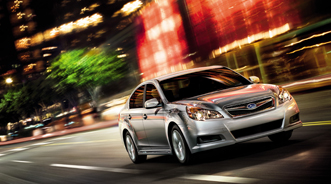Edmunds.com Reviews December & 2010 Incentive Activity

By subscribing, you agree to receive communications from Auto Remarketing and our partners in accordance with our Privacy Policy. We may share your information with select partners and sponsors who may contact you about their products and services. You may unsubscribe at any time.
SANTA MONICA, Calif. –
Edmunds.com offered a rundown Tuesday of not only how automakers handed out incentives for December, but also what the 2010 average was for the top six OEMs.
Looking first just at December numbers, site analysts found manufacturers averaged $2,528 in incentives per vehicle sold. That amount was $64, or 2.6 percent higher, than the previous month, but $26, or 1.0 percent lower, than the year-ago mark.
According to Edmunds.com, combined incentives spending for domestic manufacturers averaged $3,301 per vehicle sold in December, up from $3,215 in November. From November to December, the site determined European automakers increased incentives spending by $18 to $2,376 per vehicle sold. Among Japanese automakers, the monthly average crept up $34 to $1,821. Meanwhile, Edmunds.com found Korean OEMs cut incentive spending by $118 to $1,508 per vehicle sold.
During the month, analysts estimated that the industry’s aggregate incentive spending totaled approximately $2.85 billion, a figure 32.9 percent higher than November. They believe Chrysler, Ford and General Motors used $1.7 billion, or 59.7, percent of the total.
A breakdown of the rest of the overall December incentive total included:
—Japanese manufacturers: $774 million or 27.2 percent.
Subscribe to Auto Remarketing to stay informed and stay ahead.
By subscribing, you agree to receive communications from Auto Remarketing and our partners in accordance with our Privacy Policy. We may share your information with select partners and sponsors who may contact you about their products and services. You may unsubscribe at any time.
—European manufacturers: $250 million or 8.8 percent.
—Korean manufacturers: $125 million or 4.4 percent.
Turning next to analysis by vehicle segment, Edmunds.com discovered premium sport cars had the highest average incentives in December at $5,757 per vehicle sold. That segment was followed by large cars at $4,686.
The site said subcompact cars had the lowest average incentives per vehicle sold in December at $1,212 followed by vans at $1,737.
Officials went on to note their analysis of incentives expenditures as a percentage of average sticker price for each segment showed large cars averaged the highest at 14.7 percent, followed by large trucks at 10.3 percent. Conversely, Edmunds.com indicated premium luxury cars averaged the lowest with 3.3 percent and luxury SUVs followed with 4.3 percent of sticker price.
Comparing all brands in December, the site revealed Subaru spent the least at $522 per vehicle sold, followed by Scion at $881.
At the other end of the spectrum, analysts found Saab spent the most in December, giving out $7,998 per vehicle sold. Not far off was Mercury at $6,448.
Relative to their vehicle prices, Edmunds.com also found Mercury and Saab spent the most at 21.6 percent and 19.3 percent of sticker price, respectively. The site added Porsche spent 1.6 percent and Subaru spent 2.0 percent.
“Incentives have dropped back to pre-recession levels after surging in 2009 as manufacturers tried anything they could think of to lure customers to buy their vehicles,” explained Edmunds.com senior analyst Michelle Krebs.
“While industry averages are down, spending by Japanese automakers in aggregate is up, led by Toyota as it tries to recoup from recalls that triggered a sales slump,” Krebs added.
|
True Cost of Incentives for the Top Six Automakers |
|||
|
Automaker |
December 2010 |
November 2010 |
December 2009 |
|
Chrysler Group (Chrysler, Dodge, Jeep) |
$3,349 |
$3,099 |
$2,585 |
|
Ford (Ford, Lincoln, Mercury) |
$3,188 |
$3,173 |
$3,049 |
|
General Motors (Buick, Cadillac, Chevrolet, |
$3,370 |
$3,300 |
|
|
Honda (Acura, Honda) |
$1,521 |
$1,419 |
$1,257 |
|
Nissan (Infiniti, Nissan) |
$2,121 |
$2,180 |
$2,161 |
|
Toyota (Lexus, Scion, Toyota) |
$1,983 |
$1,951 |
$1,666 |
|
Industry Average |
$2,528 |
$2,464 |
$2,554 |
2010 Average Incentive Spending
Edmunds.com also shared the six largest automakers’ average incentives not just for 2010 but compared those numbers to the previous two years.
| Automaker | 2008 | 2009 | 2010 |
| Chrysler | $3,869 | $4,131 | $3,195 |
| Ford | $3,369 | $3,334 | $3,173 |
| General Motors | $3,573 | $3,889 | $3,515 |
| Honda | $1,201 | $1,276 | $1,563 |
| Nissan | $2,098 | $2,455 | $2,519 |
| Toyota | $1,317 | $1,598 | $2,119 |
| Industry Average | $2,558 | $2,794 | $2,608 |
“Looking at year-end averages, Honda, Nissan and Toyota are each spending more than they did in 2008 or 2009,” Edmunds.com analyst Ivan Drury conceded. “On the other hand, each of the domestic automakers has dramatically lowered its incentives this year and yet collectively are expected to gain market share.”
In wrapping up the their analysis, site officials explained, “Edmunds.com’s monthly True Cost of Incentives report takes into account all automakers’ various U.S. incentives programs, including subvented interest rates and lease programs, as well as cash rebates to consumers and dealers.
“To ensure the greatest possible accuracy, Edmunds.com bases its calculations on sales volume, including the mix of vehicle makes and models for each month, as well as on the proportion of vehicles for which each type of incentive was used,” they added.


